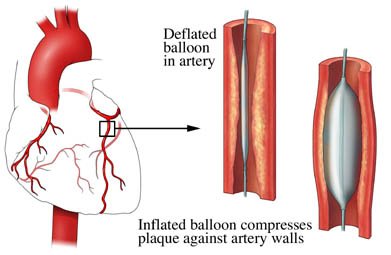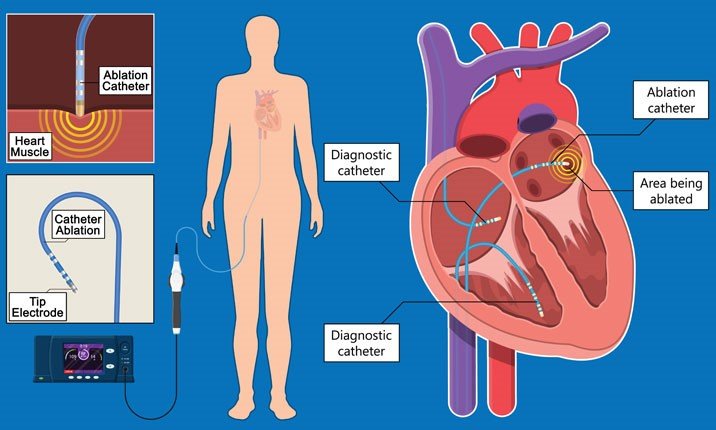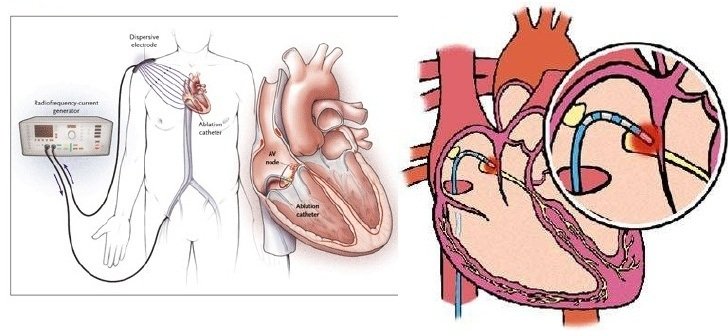Balloon Mitral valvuloplasty Procedure in Nagpur

Types of Balloon Mitral Valvuloplasty Techniques
Different types of BMV techniques are employed based on the specific method used for valvuloplasty:
Inoue Balloon Technique
This technique involves the use of a single balloon catheter introduced through a vein in the leg and guided to the heart. The balloon is positioned across the narrowed mitral valve and inflated, stretching the valve and improving blood flow.
Double-Balloon Technique
This approach uses two balloons simultaneously to dilate the mitral valve. One balloon is placed on the left atrial side, and the other is placed on the left ventricular side of the mitral valve.
Multi-Track Technique
In some cases, multiple wires or catheters are used to facilitate precise balloon placement and inflation. This technique allows for a more controlled dilation process and can be especially useful in complex or challenging cases.
Balloon Valvuloplasty with Imaging Guidance
Advanced imaging techniques such as echocardiography or fluoroscopy are often used during the procedure to visualize the mitral valve and guide the placement and inflation of the balloon.
What Happens After the Balloon Mitral valvuloplasty?
After the process, you go to a healing area. If the pipe went through your heart, you’ll need to remain a few hours before turning your leg. You may lie on a mattress for approximately two to six hours, depending on multiple factors. You’ll be required to consume plenty of water to rinse the contrast dye from your body.
Our Medical Services

ECG
An electrocardiogram (ECG) is one of the only and speediest tests utilized to survey the heart. Anodes (small, plastic patches that stick to the skin) are set at certain spots on the chest, arms, and legs.

2D Echo
A two-dimensional Echocardiogram or 2D Echo test is a demonstrative test that employs ultrasound waves to evaluate the working of the heart.

Holter Monitoring
Holter monitoring measures your heart activity over an extended period, usually between 24 and 48 hours. Basically, a Holter Monitoring is a portable device which records the heart’s electrical signals.

BP Monitoring
Each time your heart beats, it pumps blood into your arteries. A blood pressure measurement may be a test that measures the force (pressure) in your arteries as your heart pumps.

Coronary Angiography
Coronary angiography diagnoses and evaluates coronary artery blockages. Contrast dye is injected into arteries, enabling X-ray imaging to visualize blood flow and identify narrowing or blockages.

Coronary Angioplasty
Coronary angioplasty is a minimally invasive technique of abdominal artery angioplasty, which is used to treat coronary arteries that are obstructed or constricted and it is the most appropriate technique used by doctors for the treatment.

Electrophysiology Study
An Electrophysiology Study (EP study) is a test utilized to assess the heart’s electrical framework and check for abnormal heart rhythms. The natural electrical impulses coordinate the contractions of different parts of the heart.

Radiofrequency Ablation
Radiofrequency Ablation (RFA) is a minimally invasive medical procedure that uses high-frequency electrical currents to generate heat, effectively destroying abnormal tissue or cells.

Pacemaker Implantation
Pacemakers are medical devices designed to support and regulate the electrical system of the heart, ensuring it functions properly. This medical procedure entails the insertion of a small device into the chest region.

ICD Implantation
An Implantable Cardioverter-Defibrillator (ICD) is a life-saving device that plays a crucial role in monitoring and regulating heart rhythms. It consists of a pulse generator and leads implanted in the heart.

CRT_P & CRT-D Implantation
CRT implantation is a process in which technological instruments known as CRT-P and CRT-D where p stands for pacemaker and d stands for defibrillator.

Best Cardiologist in Nagpur
Introducing Dr. Chetan Rathi, a distinguished Cardiologist in Nagpur, whose eminence transcends the realm of medical proficiency.
Our Achievements in Numbers
Happy Patients
Years of Overall Experience
Specialisations
Hospital Associations
Awards & Recognition
Patient Testimonials
Dr Chetan Rathi sir is good cardiologist. I visited him many times with my family and friends for consult about issues related with cardiology.
Our Videos




Our Blog
 Coronary Angioplasty vs Bypass Surgery: Which Is Right for You?
Coronary Angioplasty vs Bypass Surgery: Which Is Right for You?
When it comes to heart treatment, many people feel confused about Angioplasty versus bypass. While both help open blocked heart arteries, the way they work is very different, which is why doctors take time to explain the difference between angioplasty and bypass surgery in simple words. In this guide, you will understand both treatments in… Continue reading Coronary Angioplasty vs Bypass Surgery: Which Is Right for You?
Read More Which Muscle is the second heart of human body
Which Muscle is the second heart of human body
Many are astonished when they hear that we have something called the second heart of the body. People often ask: what is the second heart of the body, which is called second heart of the body, or which is the second heart of human body? Well, this “second heart” is not a real heart, but… Continue reading Which Muscle is the second heart of human body
Read More The Difference Between a Cardiologist and a Cardiac Surgeon
The Difference Between a Cardiologist and a Cardiac Surgeon
The heart is a very crucial organ in the human body. If anything happens to it, two primary specialists assist cardiac surgeons and cardiologists. Although both specialise in heart issues, their jobs differ significantly. It is a good idea to learn the difference between cardiologist and cardiac surgeon so that you know whom to see… Continue reading The Difference Between a Cardiologist and a Cardiac Surgeon
Read More



